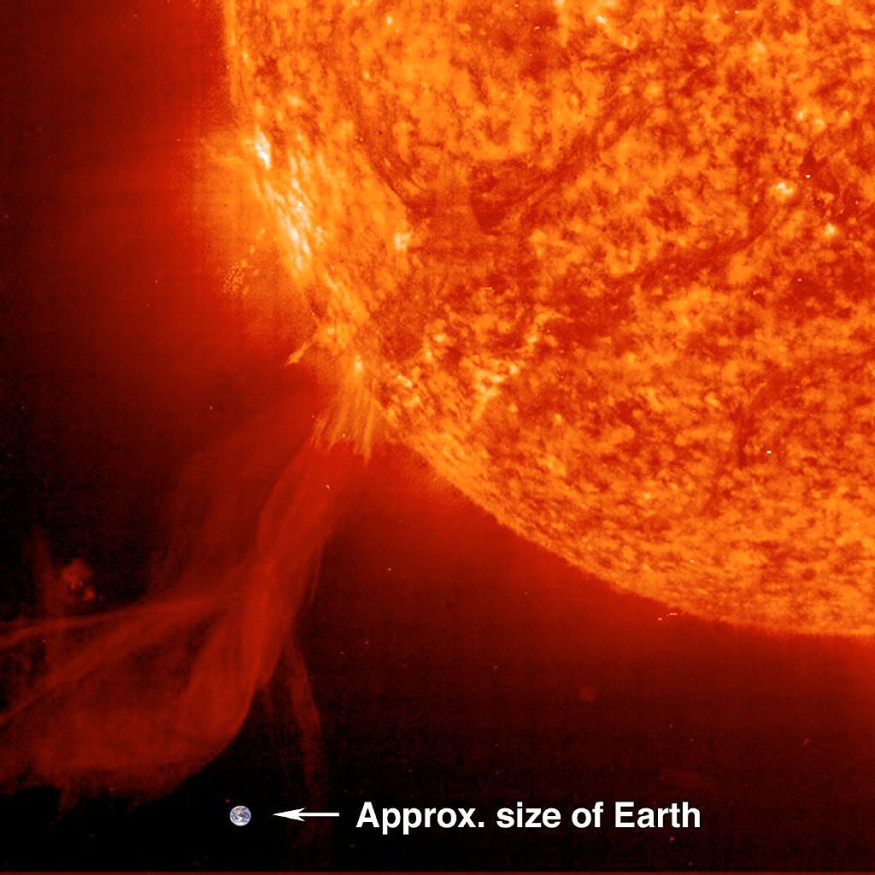Solar flares coincide yet are part of our Sun's recurring 11-year cycle, divided into the minimum and maximum phases. Depending on the phase, the occurrence of solar activities such as solar storms mostly triggers the rate of solar flares.
A manifestation of an explosive solar storm in our solar system's only star, solar flares have been at the forefront of astronomical and scientific inquiry and research for decades. Some of this fascination with the solar phenomenon involves its potentially catastrophic impact on Earth.
Can a Solar Flare Destroy Earth?

According to the solar center webpage of Stanford University, a radio program allegedly predicted that radiation from a large solar flare in the future can kill most living life forms on Earth. Still, the current astronomical understanding of solar flares proves otherwise.
From the webpage, a response to the prediction is made by Douglas Biesecker from the University of Birmingham - School of Physics and Space Research in England, UK, indicating that the answer is not absolute.
Primarily, this is because human civilization has never witnessed a planet-killing solar flare or any solar phenomena emanating from a solar storm. Biesecker said that the volume or size of the solar flare is not important when determining if it can cause a life-threatening or extinction event.
Instead, Biesecker emphasized certain factors are needed for Earth to be truly affected, including the total number of photons and particles from different energies from the solar flare that will strike the planet.
What is a Solar Flare?
According to the National Aeronautics and Space Administration (NASA), a solar flare is an extreme burst of electromagnetic radiation from the Sun's atmosphere. It is considered to be our solar system's largest explosive event.
The main characteristics of solar flares are their intense bright lights consisting of particles called photons. These are monitored in various ways, notably through x-rays and optical light. In addition, solar flares also accelerate other particles such as protons and electrons, says NASA.
Furthermore, solar flares are described to be the outward rupture yet short-lived eruption of high-intensity energy. In short, they look like a flash of light. These solar phenomena are often associated with sunspots and can cause an electromagnetic storm on Earth.
How Dangerous is a Solar Flare?
NASA's Goddard Space Flight Center (GSFC) stated that solar flares pose a threat to most living organisms. However, the Earth's atmosphere and magnetosphere, the planet's magnetic field are protecting us from the high-energy particles and radiations.
As a result, solar flares have no significant impact when it comes on humans and animals living on the Earth's surface.
Effects on Satellite Technology
Although this is the case for living creatures, solar flares, along with other solar phenomena such as coronal mass ejection (CME), can cause a geomagnetic storm capable of disrupting Earth's magnetic field and ionosphere.
This disruption affects all devices and equipment that uses satellite technology, including aircraft, mobile phones, computers, television, radios, and others.
In particular, the magnetic storm disrupts satellite communications and radio waves, which also affects the internet, satellite signal, and the global positioning system (GPS).
© 2025 NatureWorldNews.com All rights reserved. Do not reproduce without permission.





